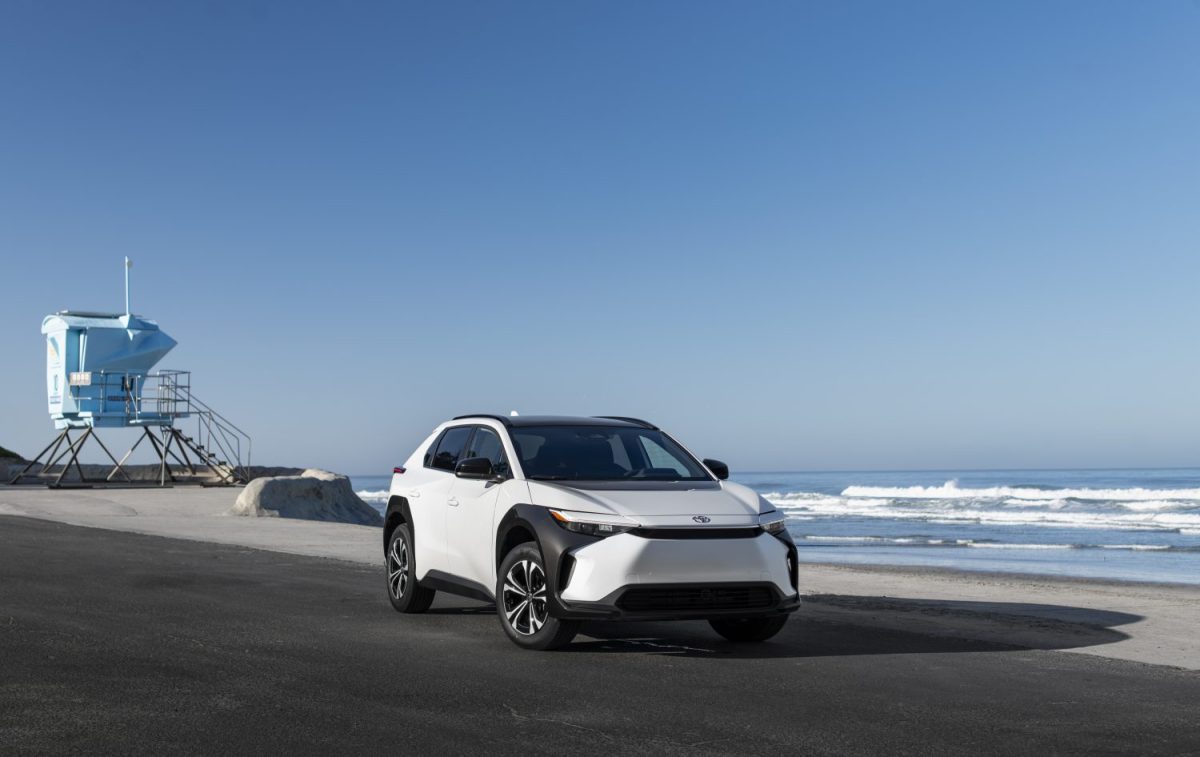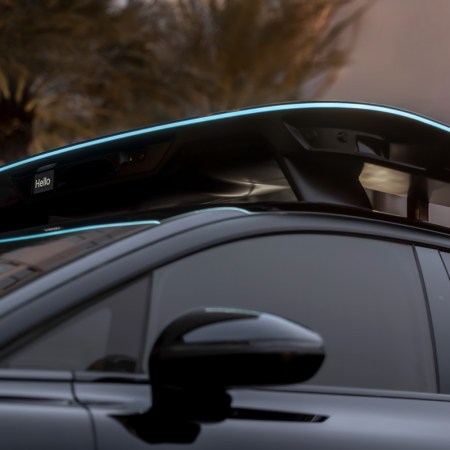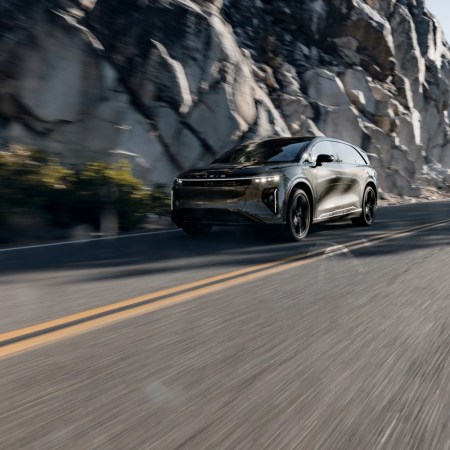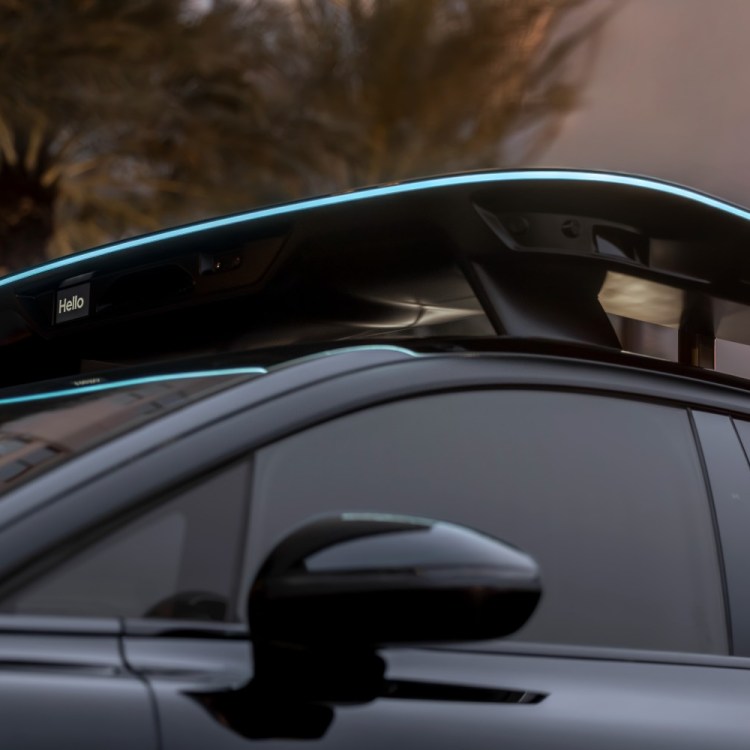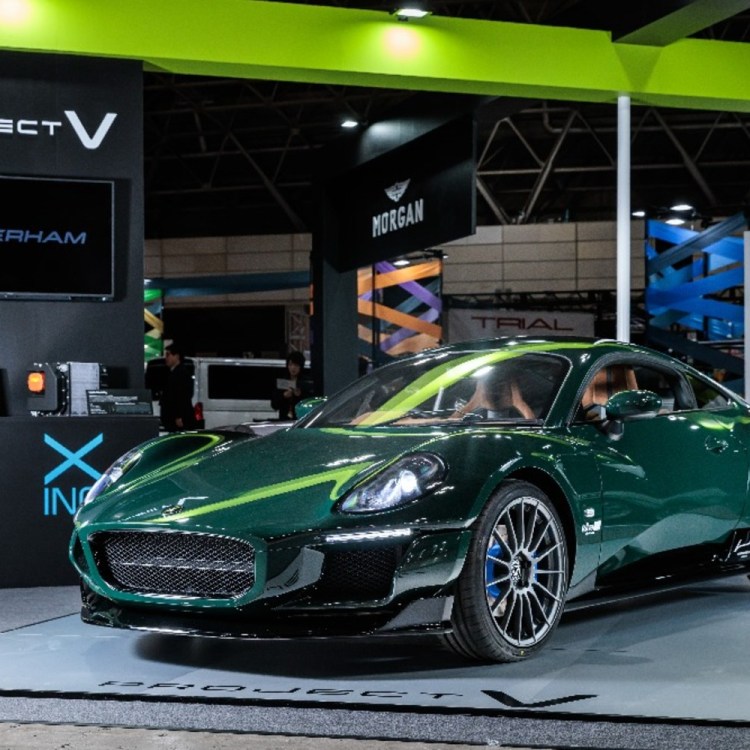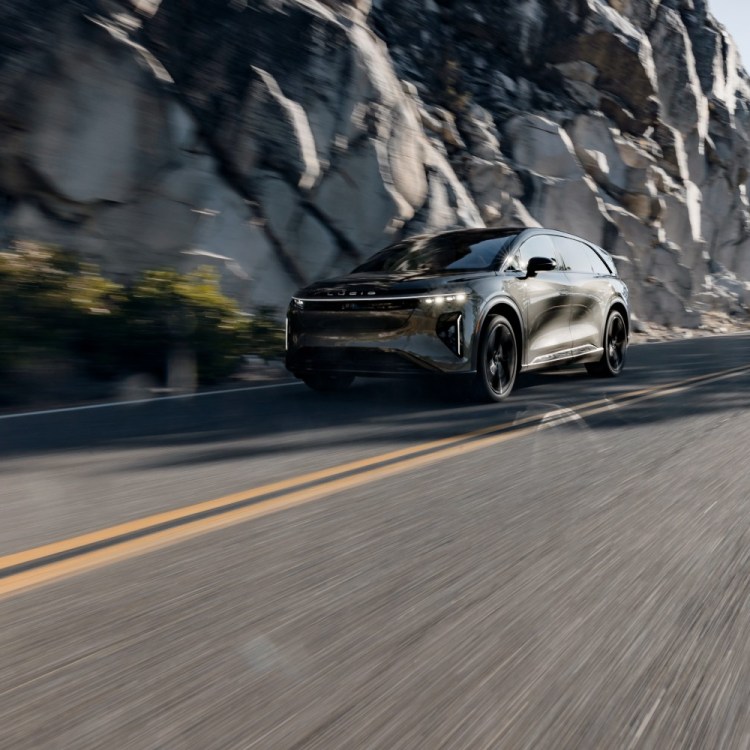It’s 2023, and Toyota’s first mass-market electric vehicle has been on-sale for less than a year. Let that sink in for a moment: the company that pioneered hybrid vehicles worldwide is now playing catch-up to electrified leaders like Ford, Hyundai and BMW, each of which have been fielding a fleet of increasingly potent battery-powered vehicles since at least the end of the previous decade.
The Japanese giant’s stubborn refusal to engage electric-only automobiles stems from several disconnects between market reality and internal policy, notably the dogged pursuit of hydrogen fuel cells in place of plugs combined with continual lobbying for an internal combustion. But whatever the logic, the fact remains that Toyota is lagging behind the rest of the pack.
Ergo, its first full-on, in-house EV should be something special, the kind of vehicle that turns heads among electric shoppers by now accustomed to excellent offerings in nearly every important slice of the showroom. Unfortunately, that’s not exactly the foot Toyota elected to put forward with the BZ4X, a compact crossover ordained as more ordinary that otherworldly.
I had ample time to ponder the proclivities of the Toyota BZ4X on a journey that took me to Ticonderoga, New York, the site of a fan-built, blueprint-specific recreation of the original sets from the 1960s-era Star Trek television series. A sci-fi road trip in a space age car should have left me in a state of wonder over the advances that engineering experts at Toyota have been able to bake into their initial EV after sitting on the sidelines for so many years. Instead, I was considering the consequences of a once forward-thinking hybrid pioneer being content with mediocrity as its first impression.
No Stand Out
Almost everything about the 2023 Toyota BZ4X seems aimed aggressively for the middle of the burgeoning EV landscape. Starting with the spec sheet, the oddly-named hatchback promises 252 miles of driving range, but only for front-wheel drive models, as adding a second motor and all-wheel drive into the mix drops the distance traveled per charge down to 222 miles.
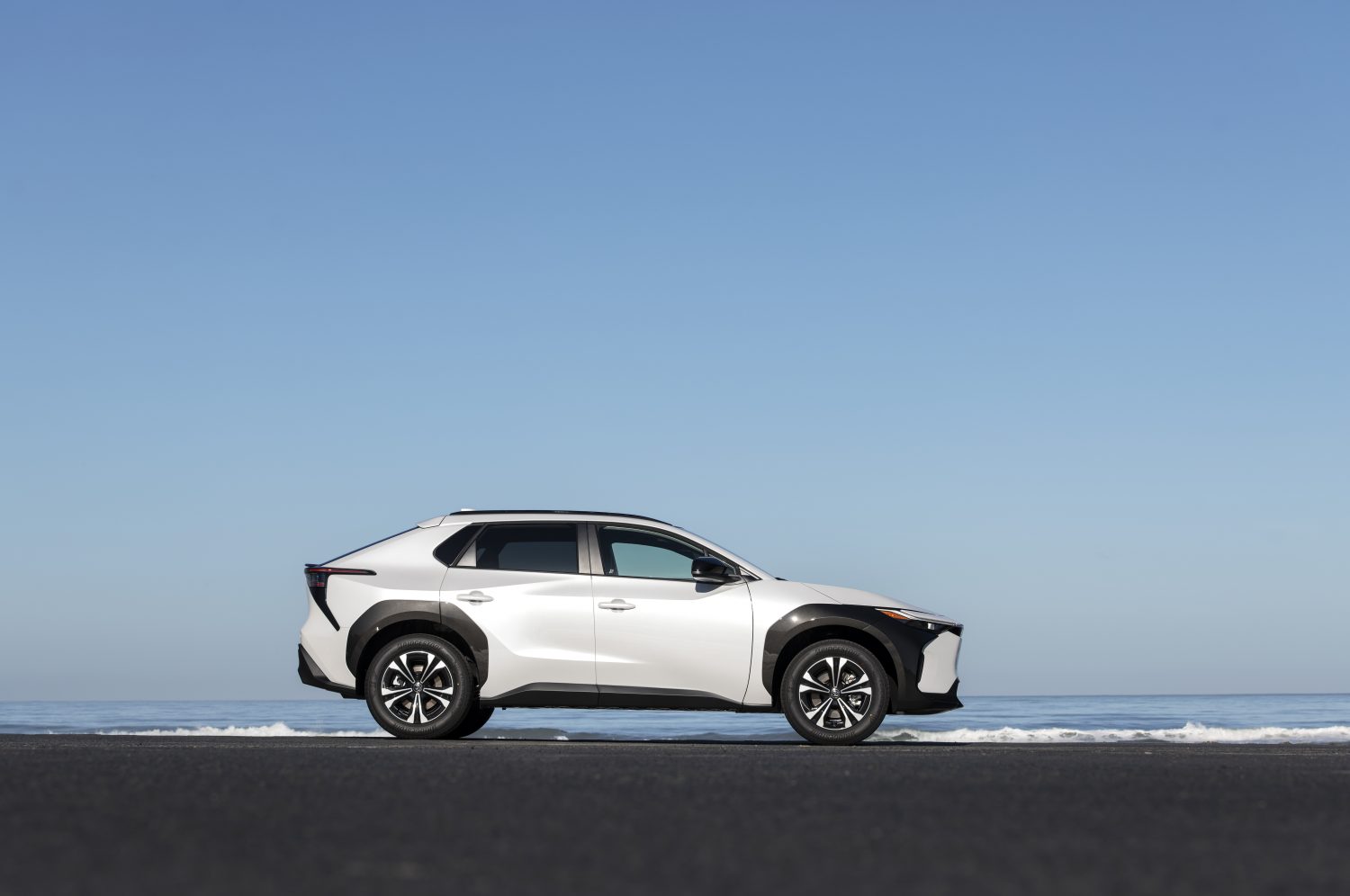
That drive-per-charge ostensibly places the BZ4X alongside affordable EVs like the Chevrolet Bolt, the Hyundai Ioniq 5, and the Kia EV6. The picture gets muddier when comparing actual pricing, however. Both the Kia and the Hyundai start around the same $42,000 mark as the Toyota, but each is eligible for substantial federal rebates that can save buyers considerable cash — a program that Toyota no longer fully qualifies for due to years of past plug-in hybrid sales cashing in. Consider, too, that both versions of the Bolt are priced well under $30,000, and the BZ4X’s pricing isn’t exactly a bargain.
Things get worse when you start to consider power and charging speeds. Toyota is dead-set on extending the life of the BZ4X’s battery for as long as possible, which sees it capping plug performance at 150 kW for single-motor models and 100 kW for dual-motor editions. That’s considerably quicker than the cheaper Bolt, but between two to three times slower than the electron-stuffing capabilities of either of its Korean competitors.
Toyota’s reluctance to tax the battery also expresses itself when considering the crossover’s 201 horsepower output in front-wheel drive trims (like the one I drove). That keeps the BZ4X below the Ioniq 5, the EV6, and even the Volkswagen ID.4. And the gap only widens when considering that each of that trio sees a substantial power boost when opting for a dual-motor setup (around 300 horsepower), while the Toyota stands pat at a meager 215 ponies.
Hothousing for Range
Spec sheets are all well and good, but how does the Toyota BZ4X integrate into the life of an actual EV owner, one who likely has a charger at home and only has to rely on public DC fast charging when attempting an extended extra-urban journey?
In terms of daily driving, the BZ4X provides a vanilla commute, with enough instant electric motor torque to feel lively on the street (if a bit muted when passing on the highway). Handling is unremarkable but well within expectations for an entry-level EV, and the cabin remains relatively quiet regardless of how fast you’re pushing the vehicle.
Toyota Readies an Electric Pickup — But Not for the US
Get ready for the electric HiluxDriving through the Hudson Valley to reach Ticonderoga, I kept the Toyota’s speeds at the 65-mph limit in the interest of preserving as much range as possible. Although I’d planned out a charging stop 135 miles into the trip, I wanted to keep a buffer in case I ran into any of the common problems that currently plague the country’s EV infrastructure. That leg of the trip consumed 42 percent of the fully-charged BZ4X’s battery, and after plugging in (and seeing charging speeds that varied from 63 kW to 98 kW, depending on how many other vehicles were also siphoning juice from the station), I was able to spike it back to 80% in about 23 minutes — not bad at all for a model with modest charging aspirations.
In terms of overall driving distance, however, the BZ4X is a tricky beast. At the start of the day, a full battery showed just 229 miles of range rather than the full 252 promised on the window sticker. The culprit? Any activation of the air conditioning system, which sliced at least 10% of the Toyota’s mileage on that humid, 85-degree afternoon.
Then there are two other oddball aspects of the BZ4X’s battery management: a “reserve” feature that keeps eight percent of its charge off the books until the displayed range hits zero percent, and the fact that I couldn’t figure out how to display the actual charge state as anything other than a bar graph. While driving this is less of an issue, as the battery meter functions like a fuel gauge, but when plugged into a charging station it’s inexcusable. Toyota provides a time estimate to “full,” but at a public charger the goal is to hit 80% capacity before electricity slows down to a trickle for that final 20% top-up, and I had to rely on the station’s display screen to tell me when I reached that plateau.
Bland Beginnings
Moving past its mixed bag of battery and drivetrain performance, there’s also a singular sensation of cheapness that pervades the BZ4X’s passenger environment. The gauge cluster, for example is a tiny LCD screen pushed all the way up against the windshield, perfect if you’re trying to do a head-up display on the cheap but not so great if you can’t fit all of the required driving information onto its scrunched-up real estate. The BZ4X was constantly flashing updates from the adaptive cruise control system every time I was passed by another vehicle, taking over whatever screen I had set on the display and generally distracting me in a way other vehicles with larger and more functional clusters do not.
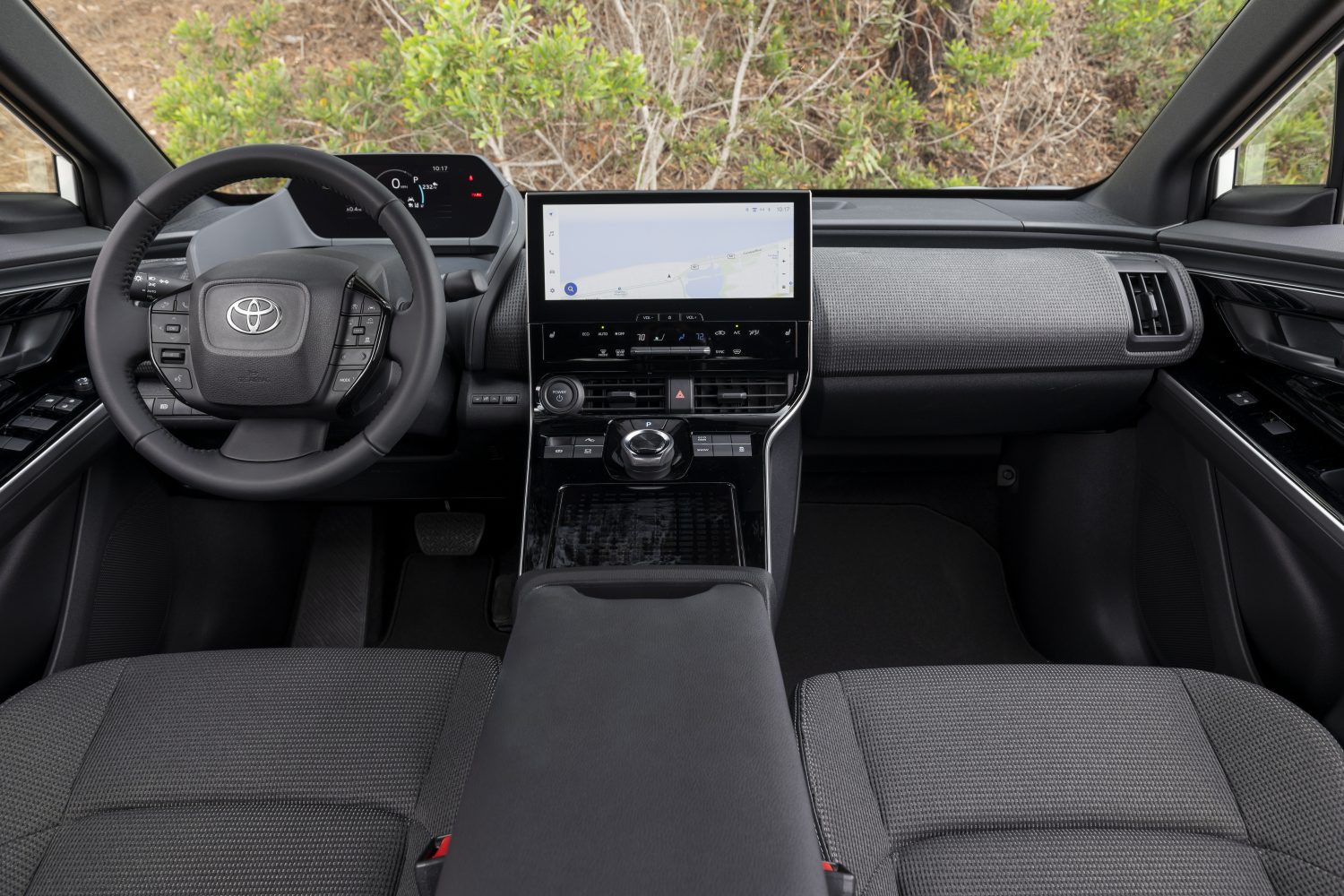
Then there’s the interior trappings, which range from hard plastics to upholstered dashboards and door panels, all of which come across as consolation prizes versus the cleaner Koreans. It’s a “good enough” approach to a vehicle that should really be trying its best to win over EV shoppers who are by now accustomed to more return on their money — especially considering there are versions of the Toyota that price out in the $50,000 range.
A Failure to Boldly Go Where Other EVs Have Gone Before
It took quite a while to get seat time in the BZ4X due to a safety issue that saw every model recalled to dealerships for a puzzling hub bolt issue that had early adopters losing wheels while underway. This led to a stop-sale and a wait for parts that put a major crimp in the crossover’s launch, with our local press fleet’s example sitting for many months in a corner of the garage until it could be fixed. It’s a telling illustration that, despite taking longer than nearly any other automaker to get into the game, Toyota still wasn’t ready when the moment arrived to make its EV splash.
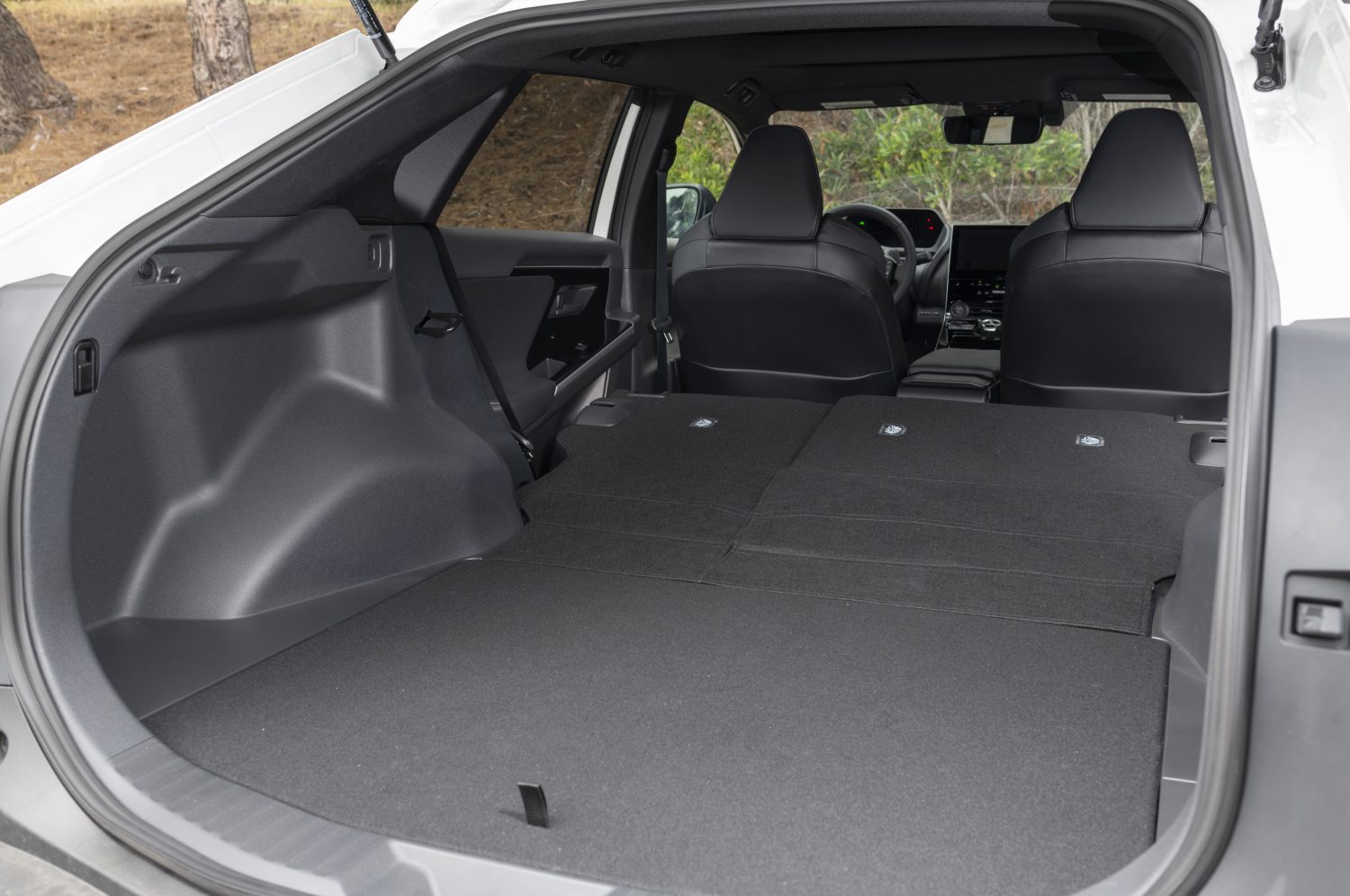
Driving on the return leg to Montreal from the Star Trek set exhibit, it wasn’t hard to get similarly retro vibes from the Toyota crossover. Much of what irked me about the car felt like it had been drawn from an electric vehicle playbook written five years ago rather than one up to the task of taking on modern rivals. Like the lovingly reconstructed sets of the Enterprise I had just experienced, the BZ4X offers a now-dated view of the future—only without the prescient insight that groundbreaking piece of science-fiction had into the shape of things to come. For Toyota, the BZ4X’s sequel will have to be more “Next Generation” than “classic” if it hopes to keep up with the warp speed advancements that define modern electric machines.
This article appeared in an InsideHook newsletter. Sign up for free to get more on travel, wellness, style, drinking, and culture.
